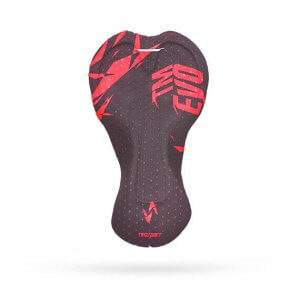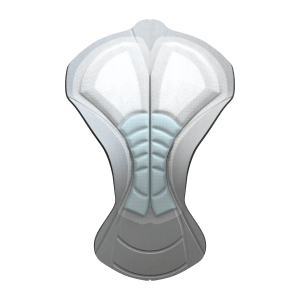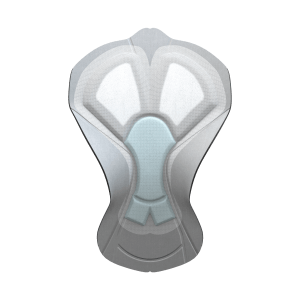29 Mar The most common mistakes to avoid when using a bike pad
Backpads are valuable accessories that can preserve the well-being of cyclists, but behind their simplicity of use lie important details that–depending on whether they are respected or not–risk making the difference between a cycling activity full of satisfaction and one marked by aches and pains.
How to avoid common mistakes on bike bottoms – Some tips
Not everyone is a professional cyclist with years of experience, some athletes need to be given a few tips when it comes to precautions to take regarding cycling apparel.
Here’s what you need to know about how to choose the right pad and how to make the best use of your pads to engage in worry-free biking!
1. Choose high-quality pads
Adopting the right cycling pad for your case is the first step you need to take to engage in the sport, reducing the risk of unpleasant irritation and pain in your lower body.
Opting for a certain type of pad guided solely by price is likely to result in pains that are anything but pleasant!
The right racing bike pads for one’s needs should be evaluated in terms of:
- foam density
- type of padding/li>
- breathability and ventilation
- grip
- hydrophilicity (ability to carry sweat to the outside)
- softness and comfort
- quality of elastic memory
- speed to dry
- type of bike we use
- type of cycling activity performed (long or short duration, type of terrain faced, etc.).
Good quality pads are products that can wick away sweat without irritating, and have appreciable bacteriostatic qualities such that they counteract the proliferation of bacteria. Really useful racing bike pads are soft enough to dampen chafing but not too much that they are ill-fitting and therefore of little use. Obviously, you have to choose models associated with appropriately sized shorts to make them work properly.
The fabrics that make up the bottoms are definitely important: they must possess appropriate bacteriostatic characteristics that allow them to preserve the bacterial flora by reducing the proliferation of harmful bacteria. High-quality cycling accessories manage to reduce the occurrence of allergies and inflammation, to dry quickly and to expel sweat outside quickly.
The foam that makes up the padding is a key aspect of the pad: everyone can choose the model with the density that most closely matches their needs. Professional cyclists generally choose stiffer pads while laymen tend to prefer softer ones.
A good quality foam has excellent shape memory that allows it to preserve its original size, as well as an appreciable softness that makes it easily adaptable to the shape of the body.

TM Evo is an advanced pad that combines the excellent T-Mirror, HT90 and VFC technologies to achieve an excellent level of shock absorption and vibration reduction while pedaling.
2. Take into account your biking style
The pad should also be chosen in relation to the duration of the cycling activity and the type of terrain on which it is practiced (e.g., steep rather than paved road).
The type of racing bike employed (e.g., MTB, cross country, downhill…) can also affect the type of pad most appropriate for one’s case to be adopted. Riding a road bike is not the same as riding a cross country mountain bike. The best thing to do is to look for information online or get advice in the store on the type of pad that is appropriate for your pedaling style and bike in use.
Making sure the pad is positioned correctly is also important, so that the ischial bones match the pad inserts created to protect them.
3. Adopt the right clothing for the pads
Backpads are a component of cycling apparel that provides athletes with safety, practicality, and comfort while playing their favorite sport.
Newbies often tend to wear briefs or boxers along with the pad. This is not good for cycling at all: the pad is designed to stay in contact with the genitals by adjusting to their shape. In this way, the pad can provide the desired protection to the perineal area during the efforts exerted to pedal. Panties, on the other hand, have seams that can lead to abrasions and chafing when stressed. Wearing underpants over pads leads to the latter negating much of their usefulness.
4. Choose pads suitable for men and women
Bottoms are made specifically to conform to the anatomical conformation of one sex rather than another, so it is unwise to take uniform designs that ignore such peculiarities.
Women’s pads have rounded shapes because of the greater distance between the ischial bones than men’s: they also have a central channel that ensures optimal protection of the intimate areas. Wearing a pad designed for a gender other than one’s own can result in decreased performance, pain from the perineal air not to mention any other ailments.

Mengoshi man

Mengoshi Woman
5. Check the wear condition of the pads

Seat pads are components designed to last a long time when treated with proper care. However, with the passage of time and progressive use, they eventually wear out and lose elasticity and compression.
Tearing of the accessory leads to loss of comfort and progressively can lead to the occurrence of various pathologies.
It should be checked whether after use the pad tends to remain in the acquired shape instead of returning to its original shape. When this happens, it means that the shape memory properties are degrading, and it needs to be replaced before it completely loses its cushioning capabilities. The same goes for shorts, which must be replaced when worn out to avoid damaging the surrounding pad.
6. Washing the pads properly
Like all garments, this cycling accessory requires proper care in washing to preserve its qualities.
The pad should be washed in a washing machine at a recommended temperature of 30° with nonaggressive neutral detergents. To avoid mistakes, however, it is necessary to follow the manufacturer’s directions on the label. It is best to avoid using unsuitable softeners so as not to risk damaging the foams that make up the padding.
Now you can indulge your passion on two wheels without the risk of making mistakes! Do you need more advice on cycling pads?
